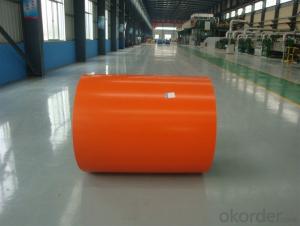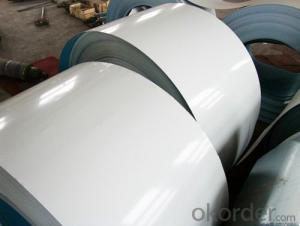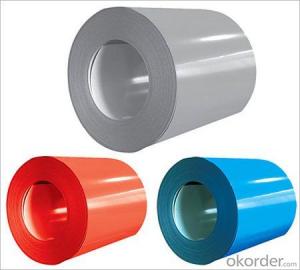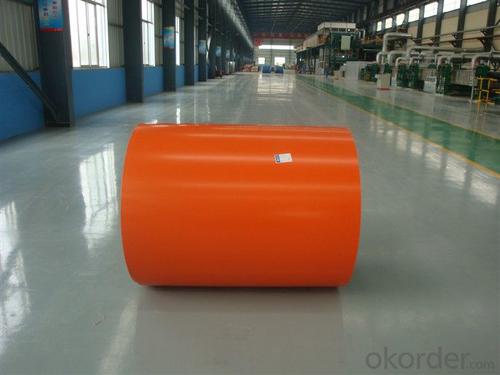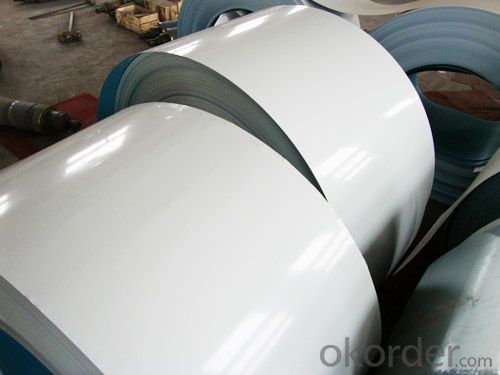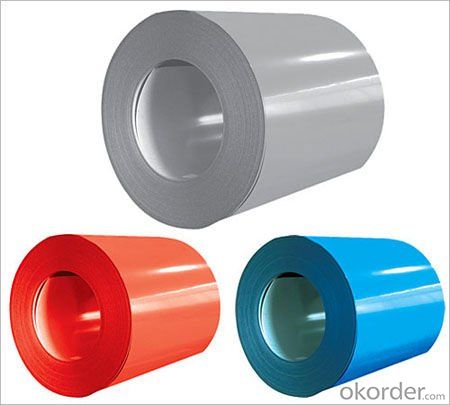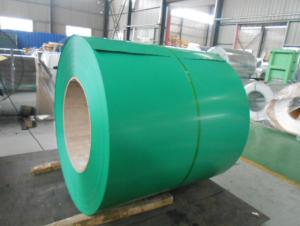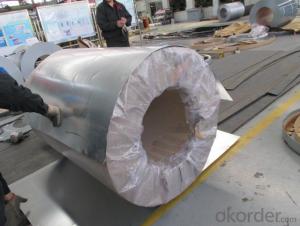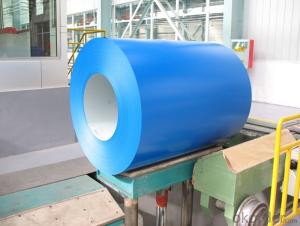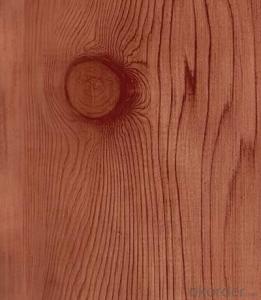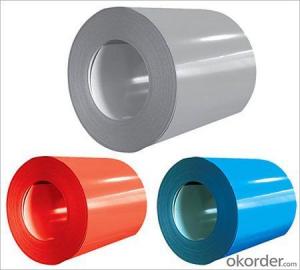Pre-painted Hot-Dip Galvanized Steel Coil
- Loading Port:
- China Main Port
- Payment Terms:
- TT OR LC
- Min Order Qty:
- -
- Supply Capability:
- -
OKorder Service Pledge
OKorder Financial Service
You Might Also Like
Available Size:
ManufacturerThickness Width Length of plate Inner diameter of coil
0.2-1.2mm 800/914/1000/1200/1219/1250mm 1000-6000mm508mm/610mm
Coated Mass OF(Prepainted galvanized steel coils) printed PPGI coils:
Base plateAvailable Coated Mass(g/m^2)
Galvanized Steel80, 100, 120, 160, 180
AvailablePainting OF (Prepainted galvanized steel coils) printed PPGI coils:
Category ofPainting Item Code
Polyester PE
High-durabilitypolyester HDP
Silicon modifiedpolyesters SMP
Polyvinylidenefluoride PVDF
Easy-Cleaning —
PaintingThickness Top side: 20+5microns;
Bottom side:5~7microns.
Color SystemProduce according to RAL Color System or as per buyer’s color sample.
Paintingstructure Top surface Bottom surface
Primer coatingNo coating 1/0
Primer coatingPrimer coating 1/1
Primer coating +Finish coating No coating 2/0
Primer coating +Finish coating Primer coating or single back coating 2/1
Primer coating +Finish coating Primer coating + Finish back coating 2/2
- Q: How are steel coils used in the manufacturing of metal containers?
- Steel coils are used in the manufacturing of metal containers as they are typically unrolled and cut into specific sizes and shapes to form the body of the container. These steel coils provide strength and durability to the containers, making them suitable for storing various products such as food, beverages, chemicals, and more.
- Q: How much money do you think I could get per lb if I wanted to trade in scrap steel material?
- Scrap steel is usually traded per ton. Average steel prices fluctuate on a daily basis. General prices for scrap steel are around $100 - $200 per ton. For daily scrap steel prices check the source below
- Q: I am a complete idiot when it comes to anything musical, so please forgive me if this is a stupid question. I bought my son his first guitar, acoustic and didnt realize until after I purchased it that it has steel strings. Can I have the strings changed from steel to nylon???
- You can easily switch from steel to nylon strings or vice versa. You can buy the strings and string the guitar yourself or I'm sure you can get it done in any normal guitar shops. I've gone from nylon to steel and it hasn't affected my guitar at all. :D
- Q: What are the different methods of levelling steel coils?
- Different methods are employed to level steel coils, depending on their specific requirements and applications. Some commonly used methods include: 1. Roller Leveling: This method utilizes a series of rollers to apply pressure on the steel coil, effectively reducing residual stresses and eliminating any waviness or curvature. It is commonly used for achieving high flatness in thinner gauge coils. 2. Stretch Leveling: In this method, the steel coil is stretched beyond its yield point to eliminate shape defects. The coil is subjected to tension in a stretcher leveler machine, which elongates the material and removes inherent stresses. It is often used for achieving greater flatness in thicker gauge coils. 3. Temper Milling: This method involves passing the steel coil through a temper mill equipped with work rolls on top and bottom. The temper mill applies tension to the coil, flattening it and improving its shape and surface quality. It is typically used for higher strength steel grades. 4. Corrective Leveling: When the steel coil exhibits significant shape defects like wavy edges or center buckles, corrective leveling is employed. This method selectively removes material from specific areas of the coil to achieve a flat and uniform surface. Laser or plasma cutting machines are often used for this process. 5. Tension Leveling: Similar to stretch leveling, tension leveling applies tension to the coil without exceeding its yield point. Bridle rolls are used to stretch the material, eliminating internal stresses and leveling the coil. It is commonly used for achieving flatness in higher strength and thinner gauge coils. These methods can be used individually or in combination, depending on the specific requirements and desired end product. Each method has its advantages and limitations, and the choice of leveling method depends on factors such as coil thickness, material properties, and desired flatness.
- Q: What are the factors that determine the price of steel coils?
- The factors that determine the price of steel coils include the current demand and supply levels in the market, the cost of raw materials and energy, the production and labor costs, transportation and logistics expenses, market competition, government policies and regulations, as well as currency exchange rates.
- Q: How are steel coils inspected for surface finish after processing?
- Steel coils are inspected for surface finish after processing through various methods such as visual inspection, surface roughness measurement, and non-destructive testing techniques like magnetic particle inspection or eddy current testing. These inspections help ensure that the steel coils meet the required surface finish standards and are free from any defects or imperfections.
- Q: How are steel coils used in the manufacturing industry?
- Steel coils are used in the manufacturing industry for a variety of purposes, including the production of various steel products such as automotive parts, construction materials, household appliances, and machinery components. These coils are often processed and formed into desired shapes through techniques like cutting, bending, and welding to create finished products that are durable, strong, and suitable for various applications in different sectors.
- Q: a steel abr sells for about 879 now...a mith just over 1kany suggestions on which-keyword WHICH steel item to make-which is the best-exp wise, and steel bar conservative wise.
- If members, cannonballs. If not, steel kites, I suppose. Steel Platebody only alchs for 1200, and requires 5 bars... But I stuck with steel, till 70 smithing... cheaper, and requires less coal to make....
- Q: Moravia’s coal and steel industries face challenges because they _____. a.do not run efficientlyb.have run out of resourcesc.have a declining work forced.have not privatized
- As someone who have lived in northern Moravia at industrial steel and coal city of Ostrava, the closest point is b), but it is questionable. I am not sure how to compare efficiency of largest steel mill in Czech Republic in comparison to China which is the biggest exporter, but Czech steel factories were modernized and run more efficient that 25-35 years ago, and been privatized and owned by Mittal. The workforce had been shrinking, so not exactly sure what that c is pointing to (aging of workforce, size of it, or quality). Northern Moravia is a part of larger coal basin that extend to Poland with large coal deposits. This was foundation for the steel industry in the 1800's together with large ore deposits that was mined in proximity of the Beskidy mountains less than 25 miles from Ostrava. The iron ore mines had been depleted for several decades, and since the late 70's when communists run the country, they were already importing Soviet iron ore. Coal mining within city of Ostrava cased to exist in the 1990's due environmental issues, and also cost. The mines were getting deeper and more costly to operate and there is no more mining within Ostrava. Couple mines are still in operation in Karvina county which is next to Ostrava. Currently the coal deposits south of the city were not opened due environmental issue which would mean destruction of third largest mountain range in the country. Therefore, my conclusion is is b, as the ore and coal resources been shrinking. The biggest challenge not mentioned here is of course competition from Russia, Ukraine, and China, which can produce steel much cheaper.
- Q: I personally don't believe the story of 8 guys who flew small planes can navigate passenger jets into buildings hundreds of miles away with that precision. It just doesn't make sense.I am wondering what the story surrounding the molten steel was, how could molten steel have been produced when fuel from the planes wasn't hot enough (it melts at 2850 degrees)?
- that's just it: there wasn't very much molten steel for the very reason you point out. Jet fuel burns at 800° to 1500°F. This is not hot enough to melt structural steel. However, engineers say that for the World Trade Center towers to collapse, their steel frames didn't need to melt, they just had to lose some of their structural strength. Steel will lose about half its strength at 1,200 degrees F. The steel will also become distorted when heat is not a uniform temperature. after the collapse, a LOT of folks took a look at the remains. the result was the conclusion that the fire caused the central core of the building to weaken. When the floors collapsed one on top of the other, the weight was too much for the weaked core to bear, causing the result we are all familiar with. hope this helps
Send your message to us
Pre-painted Hot-Dip Galvanized Steel Coil
- Loading Port:
- China Main Port
- Payment Terms:
- TT OR LC
- Min Order Qty:
- -
- Supply Capability:
- -
OKorder Service Pledge
OKorder Financial Service
Similar products
Hot products
Hot Searches
Related keywords
